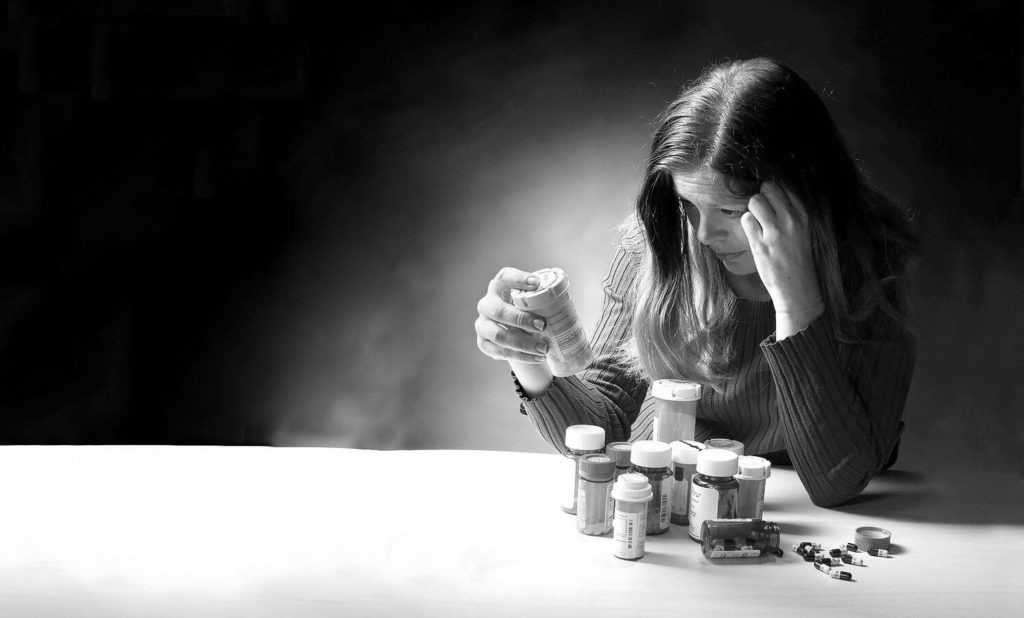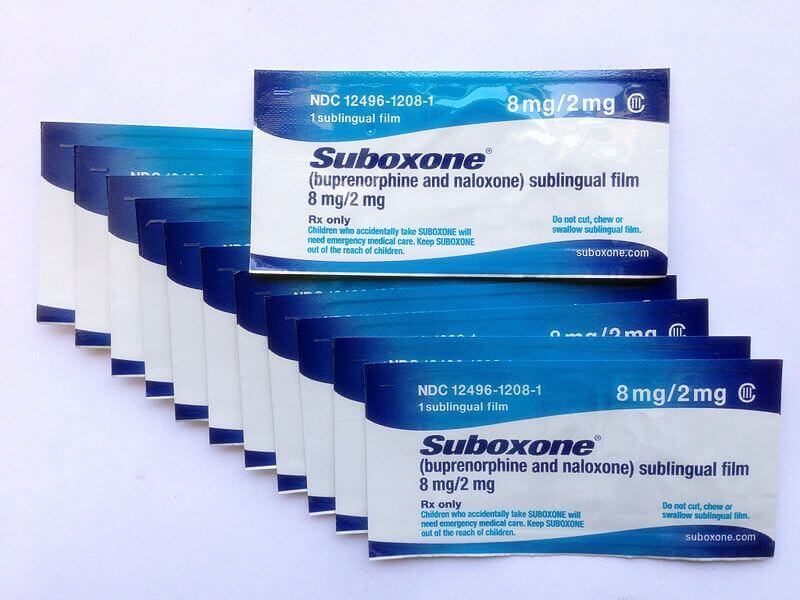
According to the Centers for Disease Control and Prevention (CDC), in the years between 2000-2015, more than half a million people died from an opioid overdose. Since 2015, an estimated 91 people die each day as a result of the abuse or overuse of opioids, including prescription painkillers such as oxycodone, heroin, and fentanyl. It is critical that individuals suffering from a narcotics addiction seek and receive help to defeat this condition. Suboxone, a prescription withdrawal medication that contains the partial opioid-agonist buprenorphine and the overdose-reversing drug naloxone is currently among the safest and most commonly used treatments. These drugs have assisted many former addicts to end narcotic dependence, which is typically the first step to recovering from addiction. However, no one should ever use Suboxone or other withdrawal medications without the direction of a doctor or addiction specialist – misuse of these drugs can result in a condition known as precipitated withdrawal, which is very unpleasant and could contribute to relapse.
Symptoms of Opioid Withdrawal
People who have relied on opioids for a prolonged period, even as prescribed, are likely to suffer from withdrawal symptoms upon cessation. This problem can be mitigated, however, using opioid replacement therapy such as buprenorphine to relieve withdrawal symptoms, or by weaning the patient from the original opioid until the body is no longer chemically dependent on it. Moreover, if the person stops taking the drug abruptly, they are more likely to face uncomfortable withdrawal symptoms.
Early stage opioid withdrawal symptoms include:
- Moodiness, irritability, and agitation
- Anxiety or depression
- Insomnia
- Flu-like muscle aches
- Watery eyes and runny nose
- Excessive yawning
- Sweating
Later-stage opioid withdrawal symptoms include:
- Diarrhea
- Abdominal cramps and pain
- Nausea and vomiting
- Chills and goosebumps
Depending on the half-life of the opioid, withdrawal can begin within just a few hours, and symptoms typically subside after 1-2 weeks. Precipitated withdrawal symptoms are more severe, however, characterized by rapid onset versions of the aforementioned symptoms.
How Is Precipitated Withdrawal Unique?
Precipitated withdrawal occurs when a person with an addiction to full agonist opioids, such as heroin, switches to using a partial opioid agonist, such as buprenorphine. Although the partial opioid agonist attaches to the same mu receptors as full agonists, it does not produce the same effects because it does not exhibit the same amount of intrinsic activity at the mu receptor. A partial agonist, however, can displace/replace the full agonist from the receptors, so the effects of the full agonist opioid stop abruptly. Because the receptor is not activated to an equivalent degree, there is a net decrease in agonist effects that causes precipitated withdrawal syndrome.

In other words, when a person still has full agonist opioid chemicals in their body because they have not started withdrawing, introducing a partial agonist like buprenorphine can induce a rapid-onset withdrawal. Withdrawal can happen quickly when someone doesn’t take their next dose of an opioid. But by comparison, precipitated withdrawal is typically much more intense, and the person suffering from it can become very ill and require hospitalization.
Drugs Involved in Precipitated Withdrawal Syndrome
As noted, Suboxone contains both buprenorphine and naloxone. Naloxone is an opioid antagonist and anti-overdose medication that essentially kicks full and partial opioid agonists off mu receptors and attaches to them for a brief period. Although Naloxone does not completely prevent withdrawal symptoms, it will stop them for a few hours. Naloxone, however, will only activate in Suboxone when the prescription drug is tampered with – this is designed to discourage a person taking Suboxone from abusing it to get high off the buprenorphine. When it is taken as directed, buprenorphine reaches opioid receptors and relieves withdrawal symptoms. Naloxone itself, as found in Suboxone, does not produce precipitated withdrawal in people who use it – this condition is the result of the buprenorphine replacing a full opioid agonist when the chemical substance is still present in the person’s body.

But Naloxone alone CAN precipitate withdrawal by eliminating full opioid agonists from the brain. This is an approach employed in rapid detox to remove opioids from the body and require the person to quickly end their chemical dependence on drugs. While withdrawal from opioids is not usually physically risky, this experience can be dreadfully painful and unlike long-term therapy and counseling does not address the person’s habits or rituals surrounding drug use. Unfortunately, because there is no counseling addressed behavioral changes involved during this type of withdrawal, the individual it at a heightened risk to return to prior habits of taking drugs, and without physical tolerance, the dose they are accustomed to receiving could cause a life-threatening overdose. For this reason, rapid detox methods are not often recommended by professionals.
Another medication that can produce precipitated withdrawal is naltrexone. This drug is sometimes prescribed to people after they have fully detoxed from a alcohol or an opioid such as heroin. It partially blocks the high effects that these drugs cause, so if a person relapses, they do not experience the pleasure they normally expect. However, if naltrexone is taken before the person has sufficiently detoxed from an opioid, the medication will precipitate withdrawal. There can be NO full or partial opioid agonists in the body, or else naltrexone will abruptly undermine the drug’s action on the brain.
Dosing Buprenorphine for Prevention of Precipitated Withdrawal
If a person doesn’t have a substantial tolerance to opioids, a large dose of buprenorphine can serve as a full opioid agonist and produce a high. Conversely, if an individual has a high tolerance for full opioid agonists such as heroin, the larger the dose of buprenorphine, the more severe the precipitated withdrawal will be if they have any amount of the full agonist still active in their body. To avoid this, small doses of buprenorphine should be administered safely without the person noticing adverse effects.

When starting on Suboxone or another buprenorphine therapy, however, the original drug of abuse should be stopped and the new medication withheld until the person begins to experience withdrawal symptoms. The onset of these indicates that the brain cannot access the amount of opioids expected, and this, as a result, impacts the behavior of neurotransmitters. Ideally, an overseeing medical professional should use the Clinical Opiate Withdrawal Scale (COWS) to evaluate the patient’s withdrawal – mild symptoms range from 5 -12 on COWS, which is the suitable point to begin buprenorphine therapy. Anything below 5 means that the person is not in full withdrawal yet, and anything above 12 can indicate severe suffering for the person.
Rehab and Medical Detox to Overcome Addiction
Collaborating with medical professionals to safely detox from opioids will prevent precipitated withdrawal or lessen the impact of the condition if it accidentally occurs. Critically, however, detox is only the first step in overcoming addiction, and while important, ending the body’s dependence does not address the chronic illness of addiction. After detox, persons should undergo comprehensive therapy provided by a rehab program that can help the person change their behavior and attitudes surrounding drugs or alcohol, achieve sobriety, and enjoy a long-term, sustainable recovery. You CAN regain your life and experience the happiness and wellness you deserve. Please contact us as soon as possible – we can help!